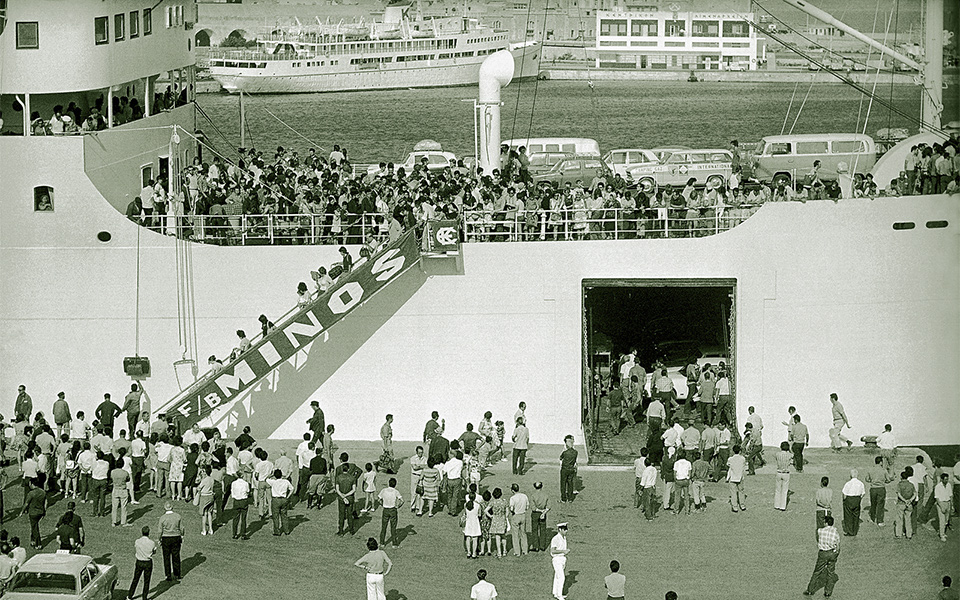Walking Through Athens: A Cultural Journey Beyond the...
From historic landmarks to edgy street...

Passenger shipping – particularly coastal services – is an activity closely linked to the development of Greece for over a century and a half. Shortly after the mid-19th century, the Greek passenger fleet consisted of several newly-built steamships that had been built in the United Kingdom for the Greek government. These vessels were managed by the state-controlled Hellenic Steam Navigation Company that had been established in the flourishing town of Ermoupoli, on the island of Syros.
Despite subsidies and favouritism, as well as the lack of competition, the company went bankrupt in 1892. That however did not obstruct the growth of the Greek passenger coastal service. The absence of a monopoly encouraged private investors to enter the sector leading to the establishment of a notable number of enterprises, which provided reliable services for more than four decades until the outbreak of World War II.
The destruction of the Greek passenger coastal fleet was one of the worst blows to the country following its occupation by the Axis Powers in World War II. After the liberation, the state failed to deal with the problem effectively, as it adopted a futile reconstruction policy during the devastating civil war, largely concentrated towards the growth of urban areas. Thus, the reconstruction of Greek passenger coastal shipping – particularly during the first two post-war decades –was undertaken by only a handful of entrepreneurs without any state backing. Starting from scratch, they acquired old British yachts and auxiliary warships and had them converted into passenger vessels, contributing to the country’s reconstruction, particularly to the growth of numerous Greek islands, through a regular and reliable connection with the mainland.
However, none of these enterprises survived for long. Most ceased operations after suffering mounting losses, mainly due to excessive state interference and overregulation, something that shipowners involved in ocean-going shipping did not face and eventually became leaders in world seaborne trade.
The exhibition, whose archival material comes from the collection of the Greek Shipping Miracle online museum, showcases ships that served the Greek passenger coastal lines, linking Piraeus with the islands of the Aegean Sea from 1945 until 1995, the year when Greek passenger shipping companies entered a new chapter through their listing on the Athens Stock Exchange.

The Italian-built ELLI TOYA, which was handed over to the Greek state in 1945 as part of World War II reparations, was acquired in 1958 by Evangelos Toyas. She linked the Greek mainland with the islands of Chios and Lesbos.
© www.greekshippingmiracle.org
The Greek Shipping Miracle, the first online maritime museum, was established as an effort to raise awareness about the Greek shipping industry and its long-standing contribution to both the Greek and the global economy.
This educational website enables visitors to explore the modern and contemporary history of the world’s leading merchant marine power from its infancy in the 1870s up to the 21st century.
Backed by one of the largest private archives of its kind worldwide, the Greek Shipping Miracle has already attracted visitors from about 160 countries.
Although shipping plays a fundamental role in the well-being of the global population, its importance is rarely acknowledged, while its services are usually taken for granted. By documenting the industry’s unique cultural heritage, important underlying qualities are highlighted. Namely, that it is an activity that transcends borders and encourages cooperation between people from different cultures and backgrounds. Moreover, that it raises living standards and boosts the economies of both developed and developing countries through the transportation of essential goods and commodities in a cost-effective and environmentally friendly manner.
About the Author: George M. Foustanos is former shipowner, maritime historian, founder of the Greek Shipping Miracle and author of 30 books about Greek shipping and shipowners. The exhibition “Greek Coastal Service 1945-1995” currently being held in Syros is based on his recent book of the same name.
From historic landmarks to edgy street...
In Syntagma Square, marble, flame, and...
A major restoration project is bringing...
Discoveries along Amalias Avenue, from the...